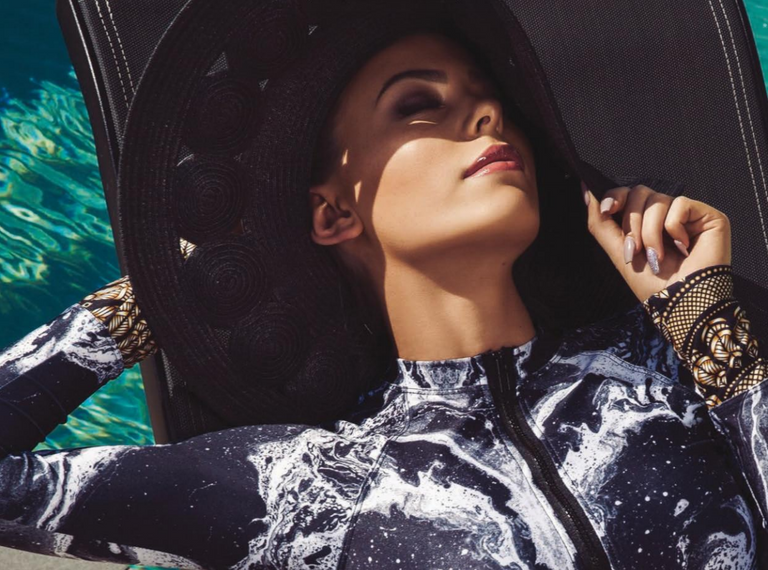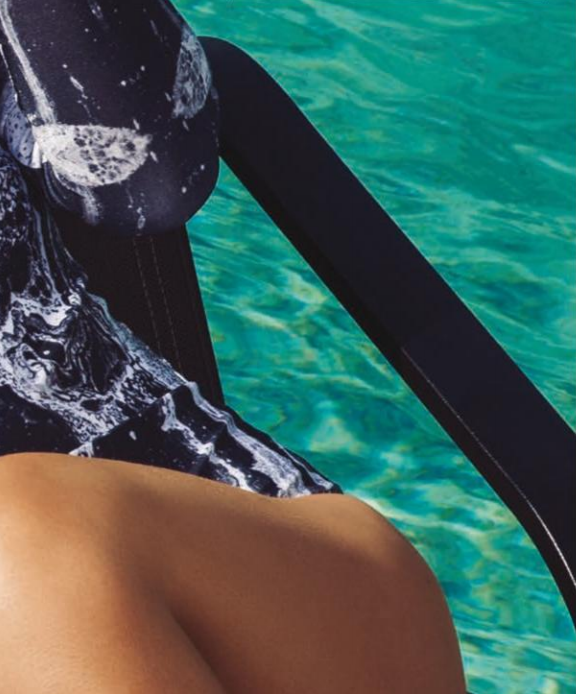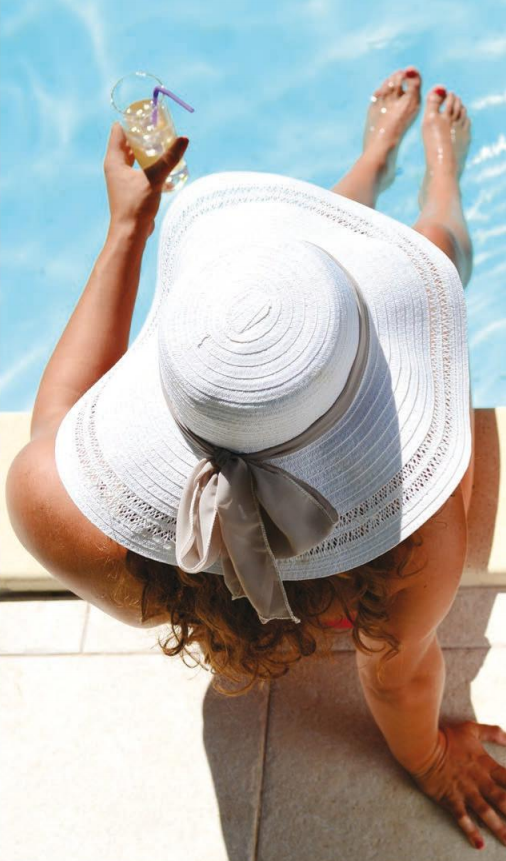The word "sunscreen" tends to conjure memories of the ‘no hat, no play’ policy at your primary school and being smeared from head to toe in sticky lotion by a family member who never grasped the whole ‘rubbing in’ concept. But being sunsmart is just as important if not more so as we age, playing a key role in anti-aging and prevention of skin cancer. And with 85 per cent of people incorrectly applying their sunscreen according to Cancer Council Australia, perhaps it’s time to go back to sun safety school.
U, ME AND UV
Poet Dorothea Mackellar’s description of Australia as a ‘sunburnt country’ isn’t just quaint – it’s accurate. Australia has one of the highest rates of skin cancer in the world. More than 2,000 Australians die from skin cancer every year and a staggering two out of three Australians will be diagnosed with skin cancer by the time they are 70.
It’s the ultraviolet (UV) radiation from the sun that’s at the heart of the skin cancer problem: every time your skin is damaged by UV, changes occur in the structure and function of your skin cells; similar to land erosion, UV damage undermines until the surface collapses.
So while we may love our quintessential sun-kissed Aussie image, in reality, the best way to protect our skin is with sensible sun protection, particularly when the UV reaches level three or higher. UV levels vary depending on where you live, so download the SunSmart app to check your area on the go.
“Too often people get sunburnt because they’re relying on the temperature when deciding whether or not they need sun protection. But it’s critical to remember that it’s the UV radiation that we need to protect ourselves from, not the sun itself. UV isn’t even related to the temperature outside,” says Heather Walker, chair of the Skin Cancer Committee at Cancer Council Australia.
“Too many Australians also rely on sunscreen as their only defence. For your best shot at protection, use sunscreen together with sun-protective clothing, a broad-brim hat, sunglasses and shade.”
Of course, when you’re exercising, this level of protection won’t always be possible – so tweak the advice to suit your sport. For example, wear a baseball cap when you’re running rather than a broad brim, and add extra sunscreen to your ears. Make sun protection a part of your exercise routine by keeping a tube of sunscreen in the same place as your fitness gear and match its formulation with the amount you’re going to sweat (more on this to come).
PHYSICAL VS CHEMICAL
There are two main types of sunscreen: ‘physical’ and ‘chemical’. Both types are effective (when applied correctly) and safe, and both have their pros and cons in different situations – particularly when it comes to working out.
Physical sunscreens contain active mineral ingredients such as titanium dioxide or zinc oxide, and they work by sitting on top of your skin to deflect and scatter damaging UV rays away from the skin. In other words, they don’t absorb UV; rather, they reflect it away from your skin.
Chemical sunscreens contain organic, carbon-based compounds such as oxybenzone, octinoxate, octisalate and avobenzone, and work by converting UV rays into heat via a chemical reaction, and then releasing that heat from the skin. In other words, the UV rays enter the skin, get absorbed and come out (usually) as infrared rays. Despite its foreign concept, the majority of sun-protection products on the market are, in fact, chemical.
Physical sunscreens are more ‘natural’ and less likely to cause irritation to the skin, which is why nearly all organic sun protection brands opt for the physical formulation. They are also suitably applied after your skincare products, such as moisturisers and serums, but before make-up. That said, they can be thick and claggy, similar to the neon zinc from your childhood. Modern versions use micronised zinc, which means they’re transparent and won’t give your skin a ghostly white cast, but as a rule they are more obvious than their chemical counterparts.
Chemical sunscreens must go directly onto clean skin, and are reputedly better at providing UVA (ageing) protection, whereas physical sunscreens are better at providing UVB (burning) protection. There is some concern that their chemical filters can generate free radical damage. They can also trigger hyperpigmentation in the skin, which is where patches of skin become darker in colour than their surrounds. On the flip side, chemical sunscreens boast higher resistance to sweat and water, so are ideal for outdoor workouts. They tend to be less greasy and more lightweight and therefore wear more easily on the skin and
under make-up.
With both physical and chemical sunscreen, re-application must be frequent, which means physical may be a smarter choice if you don’t want to redo your whole moisturising routine or make-up application.
“Our most popular and best option for sun protection is Synergie Skin UberZinc. It’s a 100 per cent physical sunscreen that blocks both UVA and UVB rays. I personally believe physical sunscreens are best. Better for your health; better for your skin,” says the founder of online clinic Dermience, Helen Paraskeva.
“Now we are lucky enough to have new-age zinc sunscreen with micronised particles that offer a much more pleasant and less chalky experience.”
Regardless of whether you opt for a physical or chemical sunscreen, alternate between the two, or layer one on top of the other to get the ultimate in sun protection, make sure you’re using broad spectrum products. Choose skincare with good quality antioxidants to help prevent the oxidative stress that leads to visible aging and increase the effectiveness of your sunscreen.
You should also make sure your sunscreen is photostable. Photostability means that your sunscreen’s UV filters do not degrade or break down when exposed to sunlight – and that doesn’t just mean keeping the bottle out of the sun. Choose products with physical sunscreen actives such as titanium dioxide and zinc oxide to ensure your sunscreen protects across the whole UV spectrum.
In the end, your choice comes down to how your skin reacts to the ingredients and the type of finish the sunscreen provides. Even if a sunscreen does offer great protection and is photostable, it might feel heavy or leave a disturbingly ghost-like cast on your skin. The perfect trifecta of effective protection, good cosmetic finish and photostability continues to challenge sunscreen manufacturers. It is ultimately a matter of finding the sunscreen, or combination of sunscreens, that is best suited to your individual skin. Whatever the time of year, your skin will thank you for it.
THE VITAMIN D DEBATE
Lack of sun exposure is widely accepted as the primary cause of vitamin D deficiency – a major problem considering its importance to the body’s use of calcium, making it vital to maintaining strong bones.
“Ninety per cent of our required vitamin D3 comes from our bare skin being exposed to UVB light from the sun,” says Dr Michael F. Holick, professor of Medicine, Physiology and Biophysics and director of the Heliotherapy, Light, and Skin Research Center, who helped to design the new sunscreen Solar D.
“There isn’t enough vitamin D3 in the food we eat. Some foods such as mushrooms and fish have vitamin D2; however, there is no evidence to support that vitamin D2 has the same health benefits as vitamin D3, which we get from the sun.”
A seemingly problematic crossroad for those wanting to simultaneously protect their skin: when you wear sunscreen to shield
UV damage, you also prevent it from getting the direct sunlight that it needs to manufacture all-important vitamin D. “Sunscreens were developed to filter out up to 99 per cent of the UV light (UVA and UVB) to protect us from sunburn.
This means that this reduces our ability to naturally produce vitamin D by up to 99 per cent,” says Dr Holick.
That said, Walker says full sun exposure is never the best option. Protection is key.
“Overexposure to UV is never recommended, even if you’re vitamin D deficient,” says Walker.
“Always remember to use sun protection when the UV is sitting at three or higher. If you’re worried about your vitamin D levels, speak to your doctor about whether supplementation is right for you. The good news is that using sensible sun protection doesn’t put you at risk of vitamin D deficiency.”
Risk is associated with the seasons. During late autumn and winter in some southern parts of Australia, the UV index
drops below three, so spending time outdoors in the middle of the day with some skin uncovered is an acceptable way to maintain your vitamin D levels. Most health experts tend to agree that even incidental time spent in the sun – think hanging your washing on the line or walking between university classes – is enough to maintain good health.



